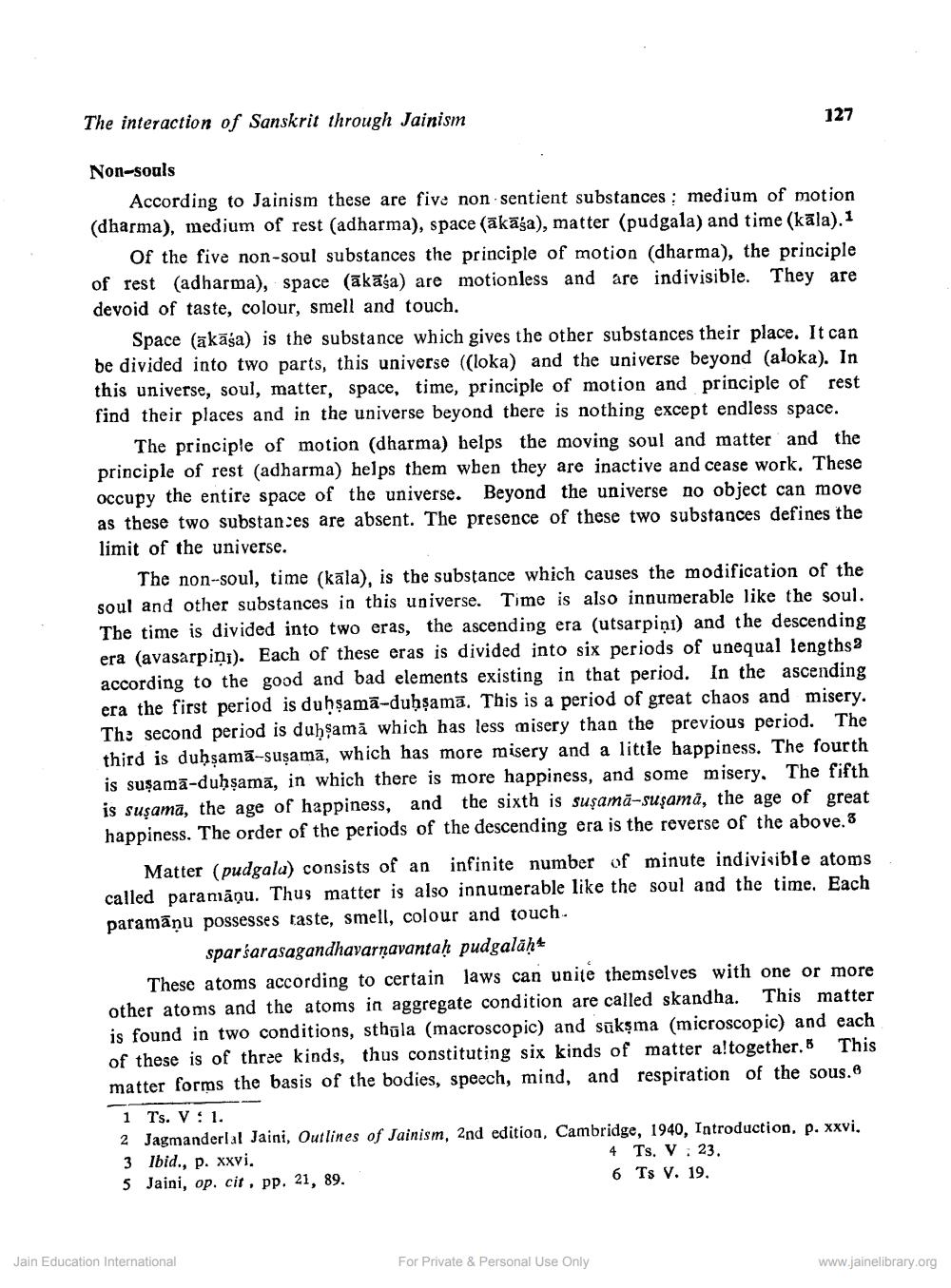________________
The interaction of Sanskrit through Jainism
Non-souls
According to Jainism these are five non sentient substances: medium of motion (dharma), medium of rest (adharma), space (akaja), matter (pudgala) and time (kala).1 Of the five non-soul substances the principle of motion (dharma), the principle of rest (adharma), space (akaja) are motionless and are indivisible. They are devoid of taste, colour, smell and touch.
127
Space (kasa) is the substance which gives the other substances their place. It can be divided into two parts, this universe ((loka) and the universe beyond (aloka). In this universe, soul, matter, space, time, principle of motion and principle of rest find their places and in the universe beyond there is nothing except endless space.
The principle of motion (dharma) helps the moving soul and matter and the principle of rest (adharma) helps them when they are inactive and cease work. These occupy the entire space of the universe. Beyond the universe no object can move as these two substances are absent. The presence of these two substances defines the limit of the universe.
The non-soul, time (kala), is the substance which causes the modification of the soul and other substances in this universe. Time is also innumerable like the soul. The time is divided into two eras, the ascending era (utsarpiņt) and the descending era (avasarpin). Each of these oras is divided into six periods of unequal lengths according to the good and bad elements existing in that period. In the ascending era the first period is duḥṣama-duḥṣama. This is a period of great chaos and misery. The second period is dubṣama which has less misery than the previous period. The third is dubṣama-susama, which has more misery and a little happiness. The fourth is susama-duḥṣama, in which there is more happiness, and some misery. The fifth is suzama, the age of happiness, and the sixth is susama-sujama, the age of great happiness. The order of the periods of the descending era is the reverse of the above.
Matter (pudgala) consists of an infinite number of minute indivisible atoms called paramãou. Thus matter is also innumerable like the soul and the time. Each paramāņu possesses taste, smell, colour and touch.
sparlarasagandhavarṇavantaḥ pudgalah
These atoms according to certain laws can unite themselves with one or more. This matter other atoms and the atoms in aggregate condition are called skandha. is found in two conditions, sthala (macroscopic) and saksma (microscopic) and each of these is of three kinds, thus constituting six kinds of matter altogether. This matter forms the basis of the bodies, speech, mind, and respiration of the sous.
1 Ts. V 1.
2 Jagmanderlal Jaini, Outlines of Jainism, 2nd edition, Cambridge, 1940, Introduction, p. xxvi. 3 Ibid., p. xxvi.
4
Ts. V 23.
5 Jaini, op. cit, pp. 21, 89.
6 Ts V. 19.
Jain Education International
For Private & Personal Use Only
www.jainelibrary.org




